Development of a Delamination Fatigue Testing Machine for Composite Materials
Abstract
:1. Introduction
2. Materials and Methods
2.1. Fatigue Testing Machine
2.2. Mode II Fatigue Delamination
3. Results
4. Conclusions
Author Contributions
Funding
Acknowledgments
Conflicts of Interest
References
- Chung, D.D.L. Composite Materials; Springer: London, UK, 2010; ISBN 978-1-84882-831-5. [Google Scholar]
- Gibson, R.F. Principles of Composite Material Mechanics; CRC Press: Boca Raton, FL, USA, 2016; ISBN 9781498720694. [Google Scholar]
- Hojo, M.; Ando, T.; Tanaka, M.; Adachi, T.; Ochiai, S.; Endo, Y. Modes I and II interlaminar fracture toughness and fatigue delamination of CF/epoxy laminates with self-same epoxy interleaf. Int. J. Fatigue 2006, 28, 1154–1165. [Google Scholar] [CrossRef]
- Brunner, A.J.; Blackman, B.R.K.; Davies, P. Mode I delamination. Eur. Struct. Integr. Soc. 2001, 28, 277–305. [Google Scholar]
- Argüelles, A.; Viña, J.; Canteli, A.F.; Bonhomme, J. Fatigue delamination, initiation, and growth, under mode I and II of fracture in a carbon-fiber epoxy composite. Polym. Compos. 2009. [Google Scholar] [CrossRef]
- Beghini, M.; Bertini, L.; Forte, P. Experimental investigation on the influence of crack front to fiber orientation on fatigue delamination growth rate under mode II. Compos. Sci. Technol. 2006, 66, 240–247. [Google Scholar] [CrossRef]
- Blanco, N.; Gamstedt, E.K.; Asp, L.E.; Costa, J. Mixed-mode delamination growth in carbon–fibre composite laminates under cyclic loading. Int. J. Solids Struct. 2004, 41, 4219–4235. [Google Scholar] [CrossRef]
- Brunner, A.J.; Stelzer, S.; Pinter, G.; Terrasi, G.P. Mode II fatigue delamination resistance of advanced fiber-reinforced polymer–matrix laminates: Towards the development of a standardized test procedure. Int. J. Fatigue 2013, 50, 57–62. [Google Scholar] [CrossRef]
- Bureau, M.N.; Perrin, F.; Denault, J.; Dickson, J.I. Interlaminar fatigue crack propagation in continuous glass fiber/polypropylene composites. Int. J. Fatigue 2002, 24, 99–108. [Google Scholar] [CrossRef]
- Kenane, M.; Benzeggagh, M.L. Mixed-mode delamination fracture toughness of unidirectional glass/epoxy composites under fatigue loading. Compos. Sci. Technol. 1997, 57, 597–605. [Google Scholar] [CrossRef]
- Matsubara, G.; Ono, H.; Tanaka, K. Mode II fatigue crack growth from delamination in unidirectional tape and satin-woven fabric laminates of high strength GFRP. Int. J. Fatigue 2006, 28, 1177–1186. [Google Scholar] [CrossRef]
- Shindo, Y.; Takeda, T.; Narita, F.; Saito, N.; Watanabe, S.; Sanada, K. Delamination growth mechanisms in woven glass fiber reinforced polymer composites under Mode II fatigue loading at cryogenic temperatures. Compos. Sci. Technol. 2009, 69, 1904–1911. [Google Scholar] [CrossRef]
- Sousa, J.A.; Pereira, A.B.; Martins, A.P.; de Morais, A.B. Mode II fatigue delamination of carbon/epoxy laminates using the end-notched flexure test. Compos. Struct. 2015, 134, 506–512. [Google Scholar] [CrossRef]
- McAlorum, J.; Rubert, T.; Fusiek, G.; Niewczas, P.; Zorzi, G.; McAlorum, J.; Rubert, T.; Fusiek, G.; Niewczas, P.; Zorzi, G. Design and Demonstration of a Low-Cost Small-Scale Fatigue Testing Machine for Multi-Purpose Testing of Materials, Sensors and Structures. Machines 2018, 6, 30. [Google Scholar] [CrossRef]
- Lee, S.-B. Stress analysis and design for a structural fatigue testing machine. KSME J. 1991, 5, 115–124. [Google Scholar] [CrossRef]
- Pach, E.; Korin, I.; Ipiña, J.P. Simple Fatigue Testing Machine for Fiber-Reinforced Polymer Composite. Exp. Tech. 2012, 36, 76–82. [Google Scholar] [CrossRef]
- Vincent, M.K.; Varghese, V.; Sukumaran, S. Fabrication and Analysis of Fatigue Testing Machine. Int. J. Eng. Sci. 2016, 5, 15–19. [Google Scholar]
- Shenzhen Baishan Mechatronics. 2011. Available online: http://www.bsjd.com (accessed on 17 May 2015).
- Rizzoni, G. Principals and Applications of Electrical Engineering; McGraw-Hill: New York, NY, USA, 2004. [Google Scholar]
- Burr-Brown Corporation. INA125—Instrumentation Amplifier with Precision Voltage Reference; Burr-Brown Corporation: Tucson, AZ, USA, 1997. [Google Scholar]
- Pascoe, J.A.; Alderliesten, R.C.; Benedictus, R. Methods for the prediction of fatigue delamination growth in composites and adhesive bonds—A critical review. Eng. Fract. Mech. 2013, 112–113, 72–96. [Google Scholar] [CrossRef]
- Paris, P.; Erdogan, F. A Critical Analysis of Crack Propagation Laws. J. Basic Eng. 1963, 85, 528. [Google Scholar] [CrossRef]
- De Morais, A.B.; Pereira, A.B. Application of the effective crack method to mode I and mode II interlaminar fracture of carbon/epoxy unidirectional laminates. Compos. Part A Appl. Sci. Manuf. 2007, 38, 785–794. [Google Scholar] [CrossRef]
- De Morais, A.B. Novel cohesive beam model for the End-Notched Flexure (ENF) specimen. Eng. Fract. Mech. 2011, 78, 3017–3029. [Google Scholar] [CrossRef]
- O’Brien, T. Composite Interlaminar Shear Fracture Toughness. In Composite Materials: Fatigue and Fracture: 7th Volume; ASTM International: West Conshohocken, PA, USA, 1998; pp. 3–16. [Google Scholar]
- Tanaka, K.; Tanaka, H. Stress ratio effect on mode II propagation on interlaminar fatigue cracks in graphite/epoxy composites. In Composite Materials: Fatigue and Fracture; STP 1285; ASTM International: West Conshohocken, PA, USA, 1997; Volume VI, pp. 126–142. [Google Scholar]
- Allegri, G.; Jones, M.I.; Wisnom, M.R.; Hallett, S.R. A new semi-empirical model for stress ratio effect on mode II fatigue delamination growth. Compos. Part A Appl. Sci. Manuf. 2011, 42, 733–740. [Google Scholar] [CrossRef]
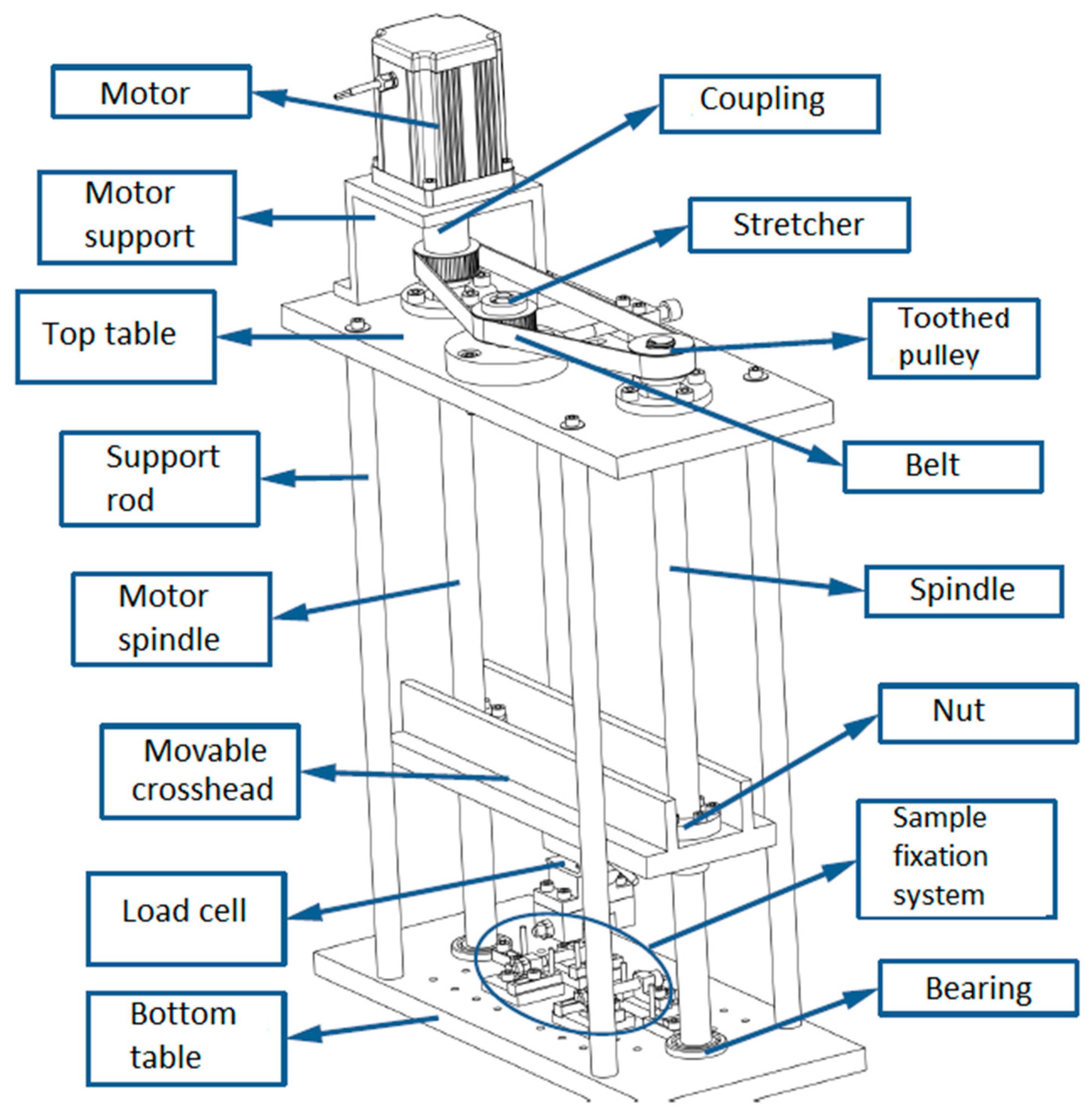
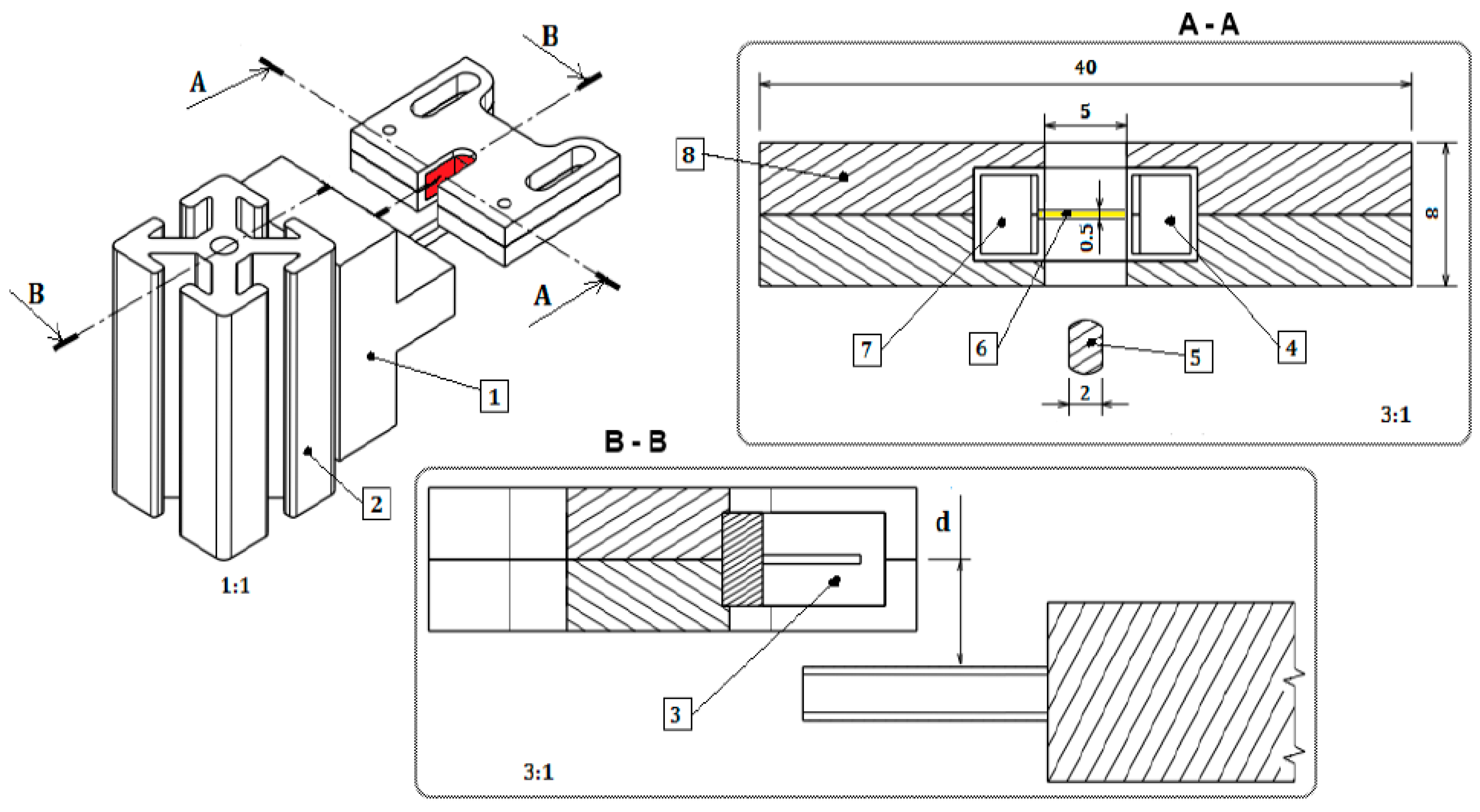

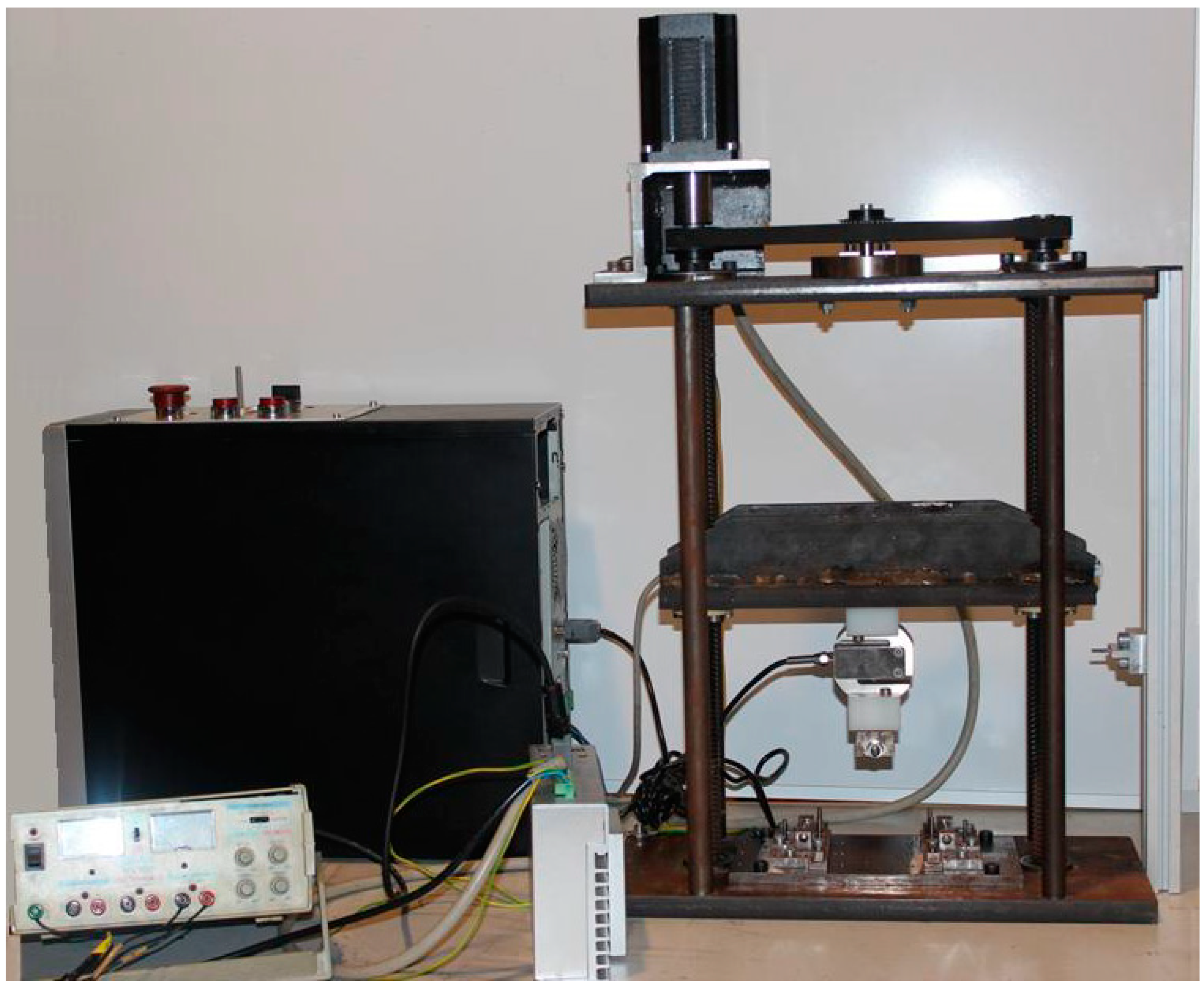
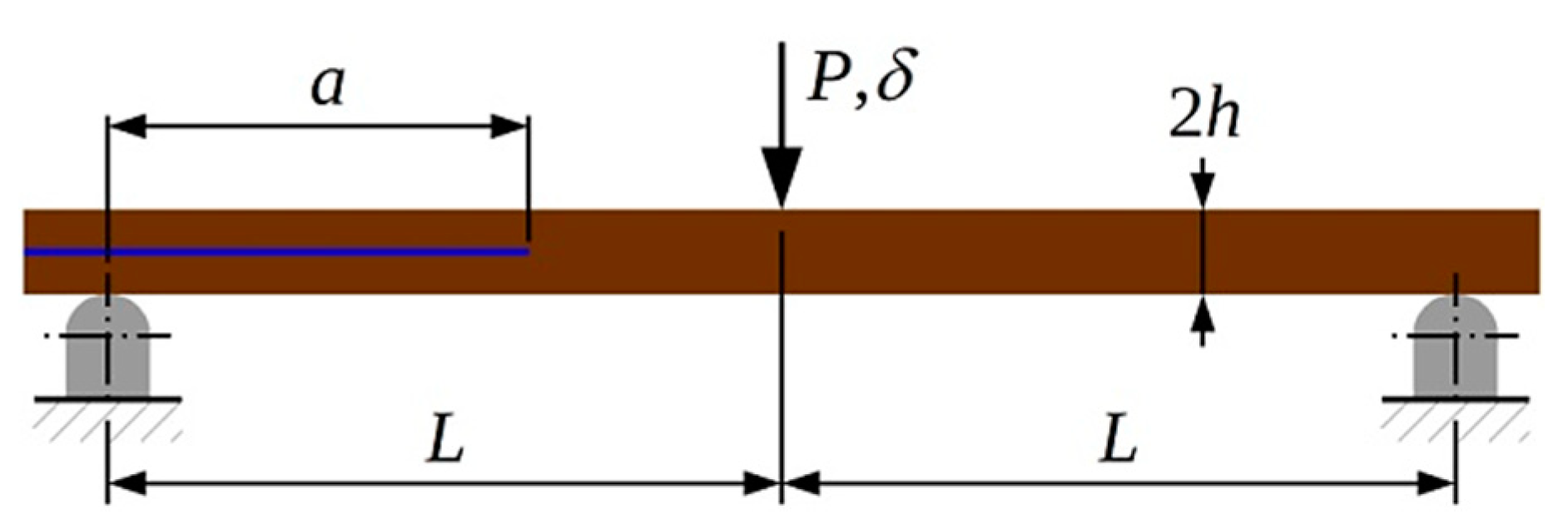
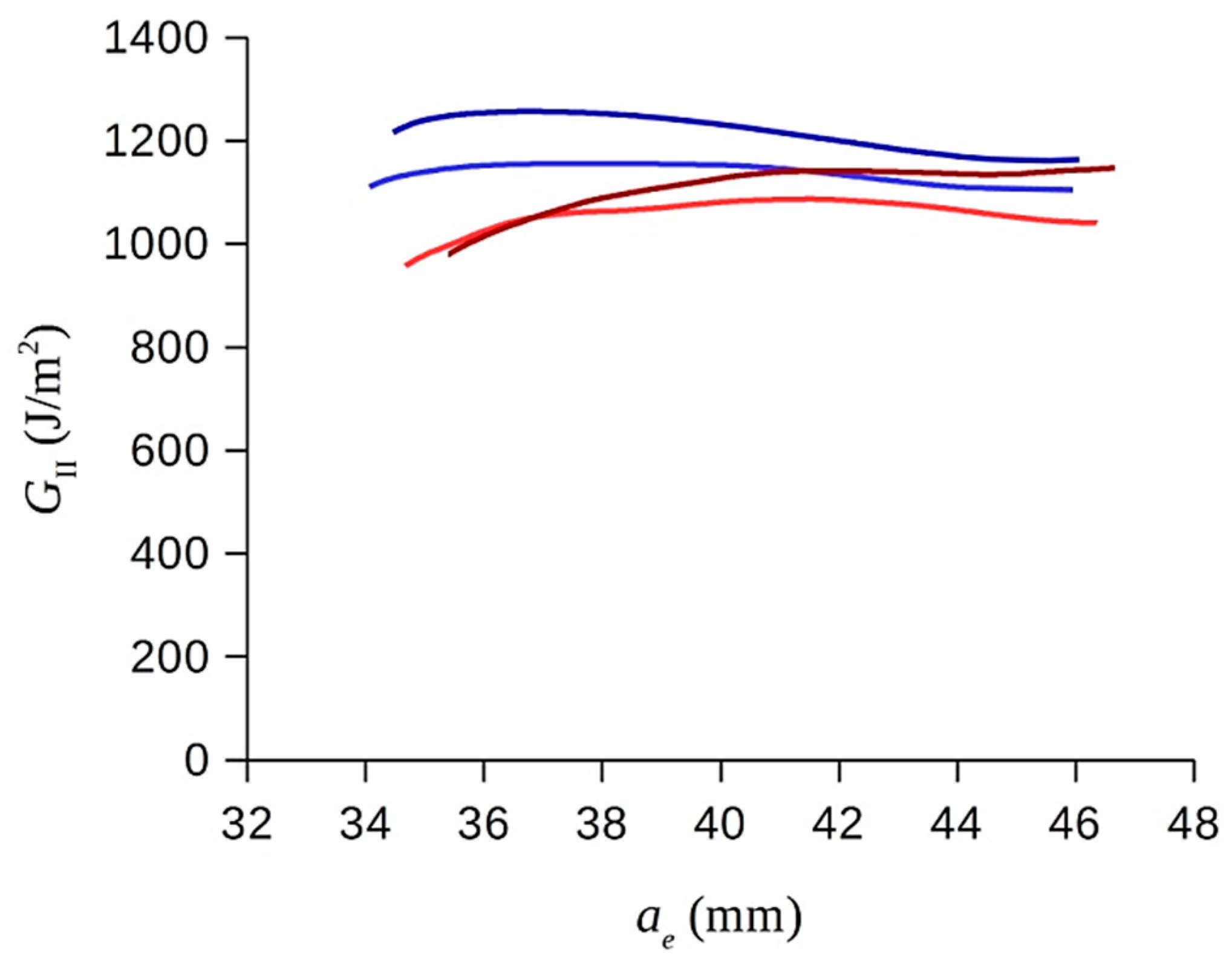
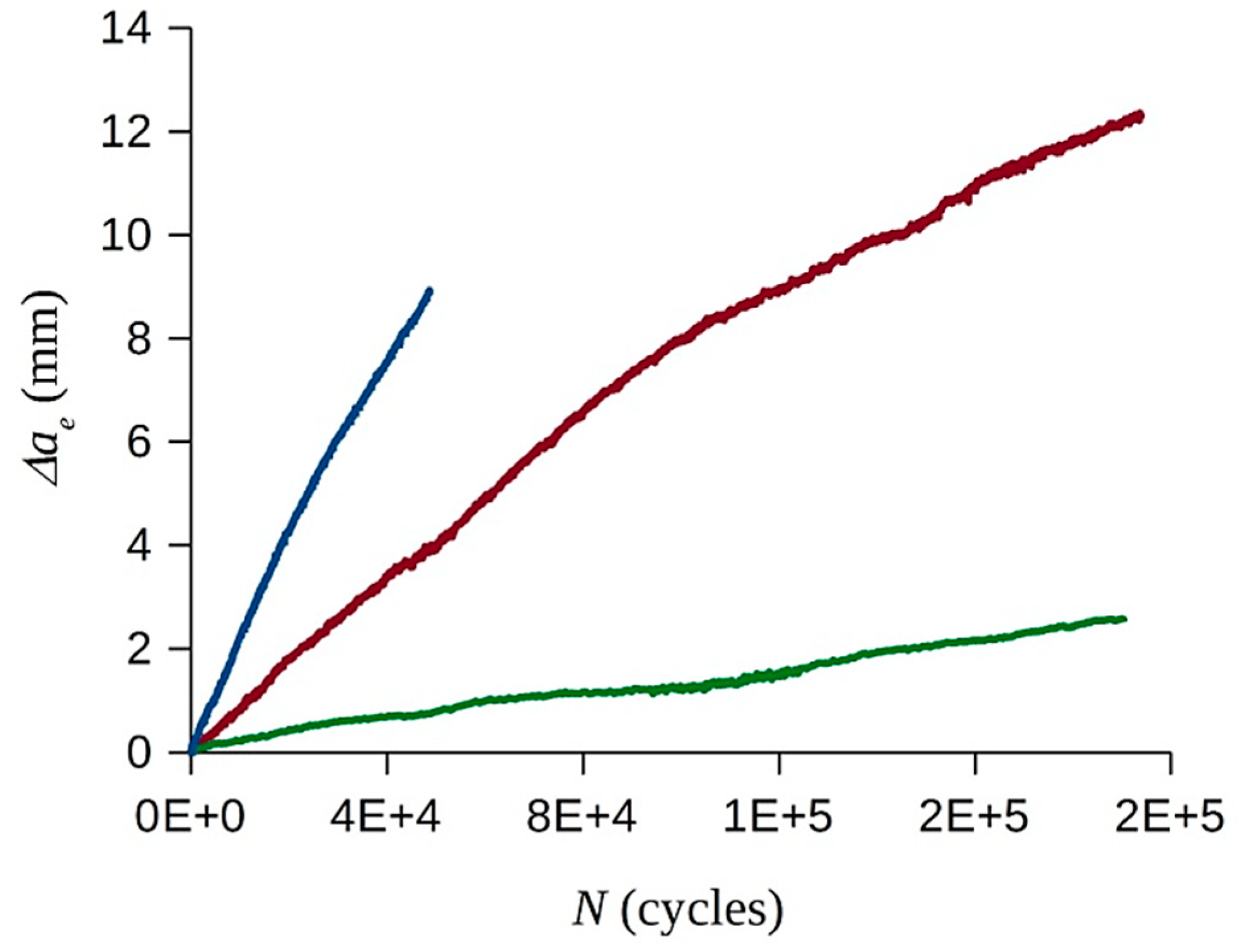
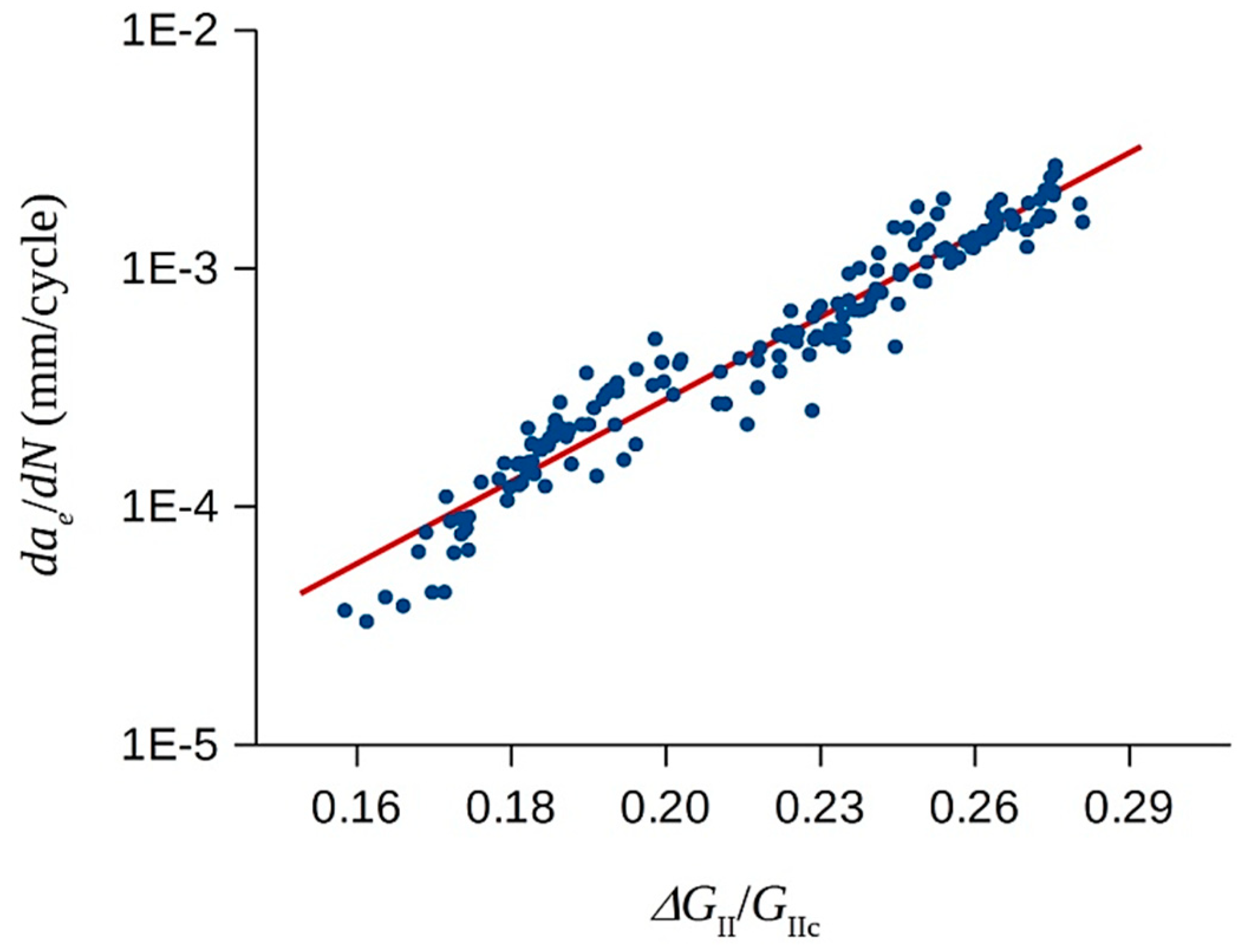
| Performance Parameters | FTM | Electrodynamic (e.g., Electroforce 3330) | Hydraulic |
|---|---|---|---|
| Capacity (kN) | 5 1 | 3 | 100 |
| Displacement (mm) | 600 | 150 | 500 |
| Maximum linear velocity (m/s) | 0.01 | 2 | 2 |
| Displacement resolution (μm) | 5 | 1 | 1 |
| Load resolution (N) | 1 2 | 0.01 | 0.1 |
| Maximum frequency (Hz) | 10 | 100 | 100 |
| Weight (kg) | 52 | 118 | 10000 |
| Cost of 24 h running (electricity - €) | 0.50 | 1 | 10 |
| Maintenance (€) | Grease spindles – 1 € every 106 cycles | Almost none | Grease, oil – 1000 € every year |
| Cost of the equipment (k€) | 1 | 150 | 200 |
© 2019 by the authors. Licensee MDPI, Basel, Switzerland. This article is an open access article distributed under the terms and conditions of the Creative Commons Attribution (CC BY) license (http://creativecommons.org/licenses/by/4.0/).
Share and Cite
Pereira, A.B.; Fernandes, F.A.O.; de Morais, A.B.; Carvalhoso, P. Development of a Delamination Fatigue Testing Machine for Composite Materials. Machines 2019, 7, 27. https://doi.org/10.3390/machines7020027
Pereira AB, Fernandes FAO, de Morais AB, Carvalhoso P. Development of a Delamination Fatigue Testing Machine for Composite Materials. Machines. 2019; 7(2):27. https://doi.org/10.3390/machines7020027
Chicago/Turabian StylePereira, António B., Fábio A.O. Fernandes, Alfredo B. de Morais, and Pedro Carvalhoso. 2019. "Development of a Delamination Fatigue Testing Machine for Composite Materials" Machines 7, no. 2: 27. https://doi.org/10.3390/machines7020027
APA StylePereira, A. B., Fernandes, F. A. O., de Morais, A. B., & Carvalhoso, P. (2019). Development of a Delamination Fatigue Testing Machine for Composite Materials. Machines, 7(2), 27. https://doi.org/10.3390/machines7020027







